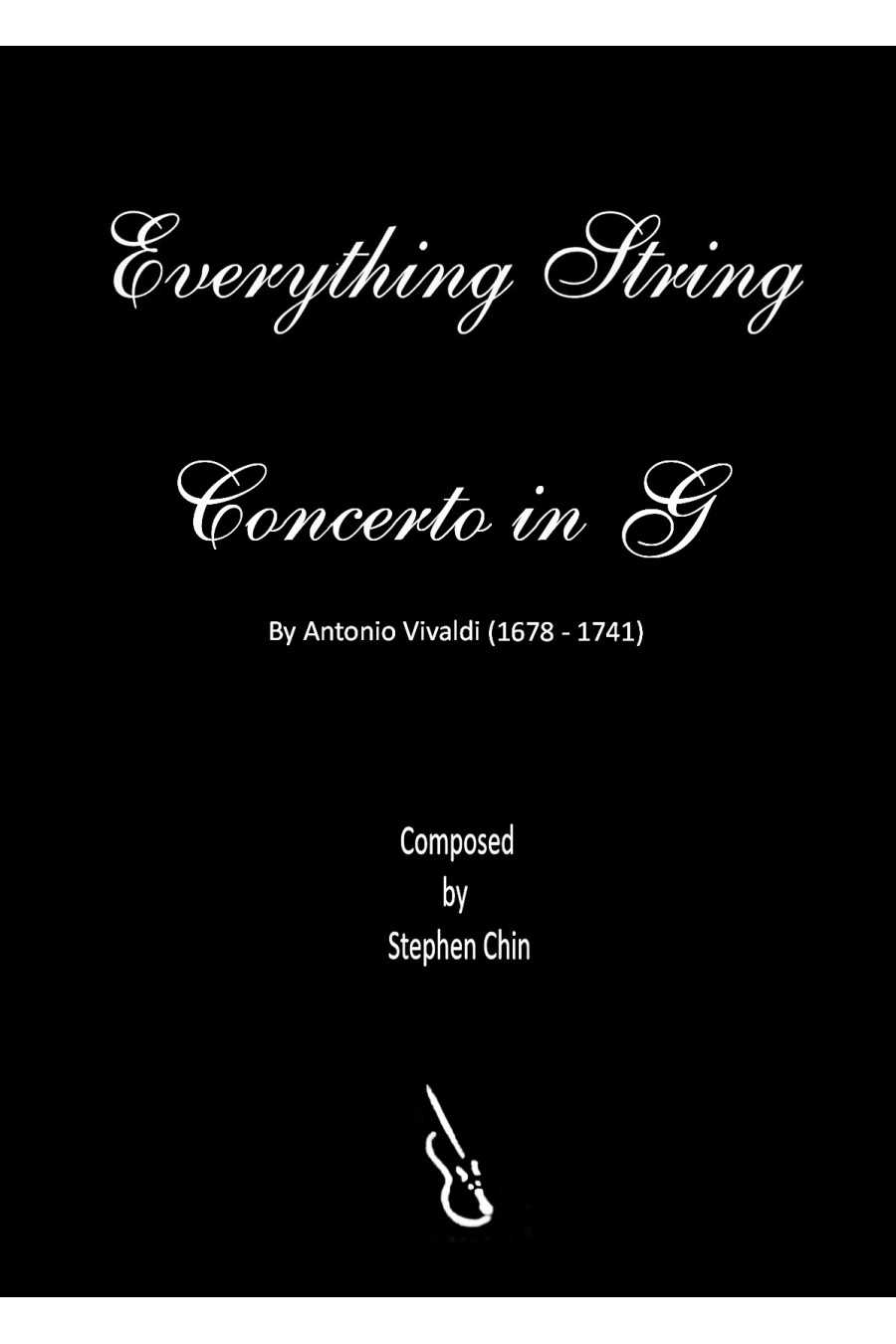
Stratosphere By Stephen Chin For String Orchestra
This piece uses dynamic change and harmonics to evoke the beauty and mystery of the stratosphere.
Dedicated to Stephen's wonderful wife, Ann. Grade 3.
Vivaldi wrote many concertos for different instruments, including one for mandolin and strings. The composition's formal structure remains unaltered, but some intricate figurations have been tweaked. The music creates a dialogue between the orchestra's sections as they share the melody. The Baroque string crossings and harmonic progressions make the piece enjoyable to play.
For String Orchestra Grade 3
Vivaldi was a prolific composer who created an impressive catalogue of concertos for a vast array of instruments. The piece, originally composed for mandolin and strings, showcases his virtuosity in crafting complex, ornate figurations. Although some of these figurations have been slightly adapted, the fundamental harmonic and formal structures of the composition remain unaffected.
The music features a delightful sense of dialogue between different sections of the orchestra as they share the melodic line, creating a rich and dynamic texture. Furthermore, players will relish the opportunity to perform the customary Baroque string crossings, which require precision and skill, as well as the familiar harmonic progressions that underpin the music. Overall, the piece exudes an effervescent energy that is characteristic of Vivaldi's style and will undoubtedly captivate both performers and listeners alike.
For String Orchestra Grade 3
This piece uses dynamic change and harmonics to evoke the beauty and mystery of the stratosphere.
Dedicated to Stephen's wonderful wife, Ann. Grade 3.
Schubert's Sonatina Op. 137, No. 1's Allegro molto movement, originally for violin and piano, has been arranged for strings, making it more accessible.
Composer Franz Schubert was a skilled violinist who wrote over 12 string quartets by age 19. His first three violin sonatas, including Sonata No. 1 in D major, D 384, were later published as Sonatinas in 1836. The charming piece of music is relatively easy to perform.
Schubert's "März 1816" sonata has an intimate atmosphere, perfect for a small ensemble. It features three movements: Allegro molto, Andante, and Allegro vivace. The Allegro molto is a lively and fast-paced movement, followed by a slower, more contemplative Andante. The piece concludes with a rousing Allegro vivace.
'Heart in The Highlands', inspired by Robert Burns, evokes Scotland's rugged beauty with pizzicato, harmonics, dotted rhythms, and drones.
Experience a captivating musical journey to Kyoto with “Two Silk Screens from Kyoto” by Stephen Chin. This evocative string orchestra piece beautifully reflects Japanese culture through graceful melodies and intricate harmonies. Immerse yourself in its meditative ambiance, as the strings evoke vivid images of cherry blossoms and serene landscapes.
Stephen Chin: “These two pieces were inspired by my visit to Japan. They capture memories of the country's beauty, contrasting the elegance of cranes by a lake with the dynamic movements of samurai. I frequently used the Japanese scale, Hirajōshi, along with other pentatonic scales throughout the set.”
Intense and emotional, the music evokes feelings of desperation, anxiety, and frenzy. The dark tones of G minor and rapid rhythm create a menacing atmosphere. The hammering rhythm eventually overtakes a noble melody played by the cellos.
For String Orchestra Grade 3.5